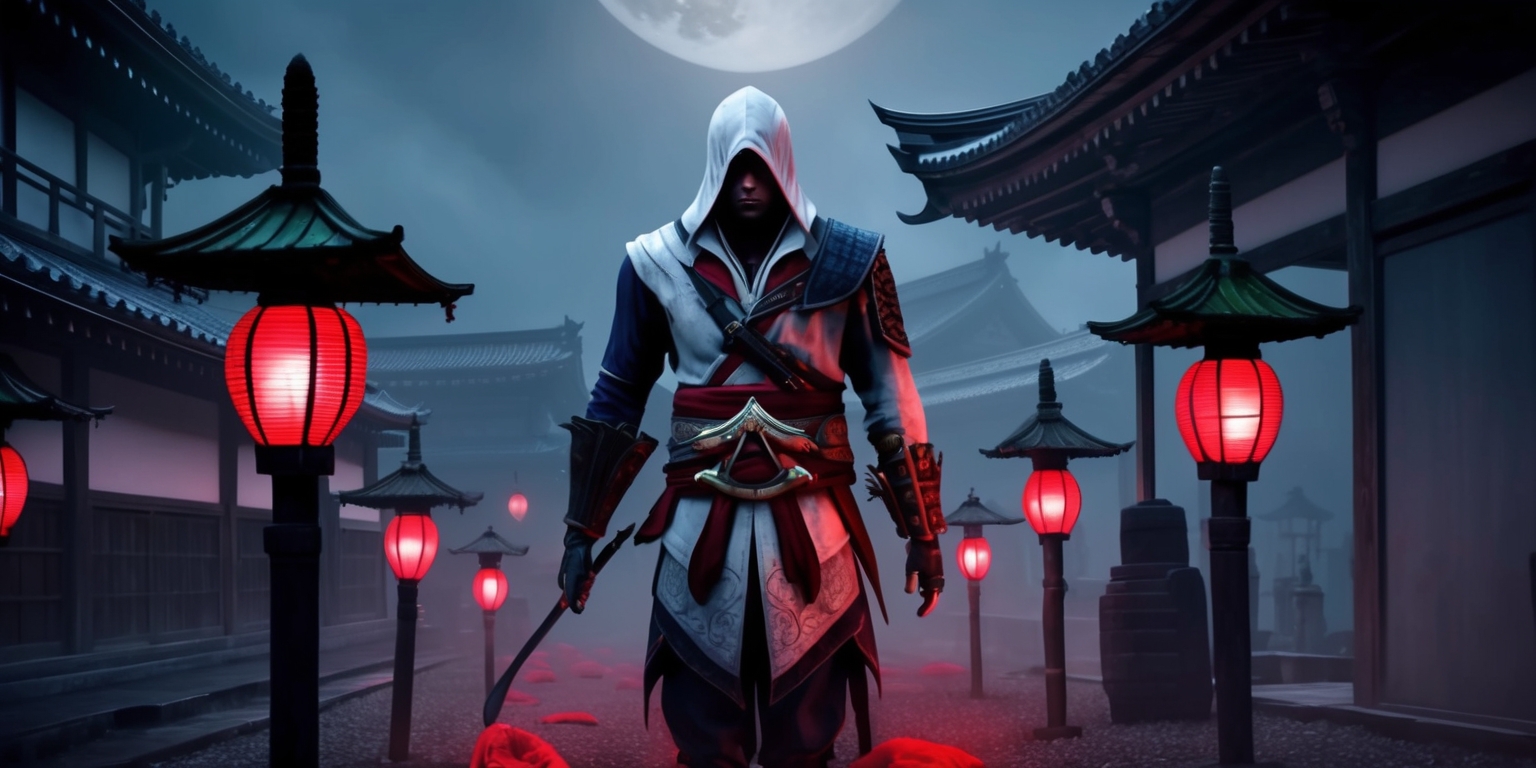Kyoto Shadows: Unraveling the Intricate Web of Assassin's Creed Missions
- May 16, 2025
- 0

Assassin's Creed Shadows presents an intricate tapestry of missions that interweave narrative decisions, stealthy strategy, and layered character interactions. The journey begins with an enigmatic quest that draws the player into a world where every decision alters the landscape of loyalty and consequence. At the heart of this experience lies the complex Twisted Tree mission set—a series of challenges that demand thorough preparation, careful information gathering, and precise execution. Players are encouraged to dive deep into the rich historical setting allure and vibrant aesthetics of Kyoto as they navigate through missions that test both intuition and strategy in a realm replete with hidden motives and compelling personalities.
Embarking on the Intricate Quest Chain
The launch of the Twisted Tree sequence is marked by the initiation of the “Inside Help” quest, a pivotal point that draws attention to the broader sinister plots evolving within the storyline. Here, players are urged to complete preceding introductory missions that lay the groundwork for deeper involvement, including encounters with influential figures like Ise Sadatame at Byodoin Temple. This early phase in the mission chain sets a tone of immersive subtlety, urging the player to explore the layered narratives behind every character's facade. The game’s narrative configuration strategically intertwines the need for exploration with mission progression. For avid strategists, this phase "doesn't simply focus on moving ahead; it embodies" a time to gather critical information and understand subtle cues about target characters and their hidden affiliations.
The Catalyst Behind the “Inside Help” Challenge
Activation of the “Inside Help” mission is more than a mere tick on the checklist—it is a gateway into the inner workings of both the protagonist’s world and the adversarial network. The exact mechanics behind initiating this quest speak to the game’s design philosophy: layering quest narratives that seamlessly blend tactical objectives with rich storytelling. After completing a preceding sequence, players are introduced to the nuances of aligning with key agents of change. The entire operation emphasizes not only the physical exploration of Kyoto’s storied alleys and temples but also the mental exercise of deducing alliances. With every step, the gameplay invites the player to become increasingly aware of timing, choices, and the fluidity of mission progression that can drastically alter the ensuing storyline.
Encountering Influential Figures in Historical Settings
A vital turning point unfolds as the mission forces a rendezvous with notable historical figures. One such encounter occurs with Ise Sadatame at Byodoin Temple. This meeting serves as both a narrative pivot and a strategic checkpoint. It introduces an element of urgency—one where the balance of honor and enigma swirls around the discussions of past alliances and future gambits. The serene yet imposing temple environment not only augments the aesthetic appeal but also reinforces the weight of decisions soon to be made. As players become entangled in these carefully constructed dialogues, they are encouraged to capture every hint regarding potential allies and adversaries. In this delicate exchange of information, the stakes are high, and every whispered secret might tip the scales of later confrontations.
Unraveling Responsibility at Kyomizudera Temple

Further enriching the narrative is the role of Ujimasa, encountered while addressing the “Inside Help” quest at Kyomizudera Temple. This scene is rendered with awe-inspiring detail, merging historical architecture with gameplay urgency. The character of Ujimasa emerges as a compelling linchpin—but not without conditions. The dialogue reveals his conditional support, contingent upon completing the intricate network of the Twisted Tree missions. The interaction is carefully crafted to coax the player into a deeper level of forethought; every conversation is laden with hints about trusted allies and vulnerable weak points among enemy ranks. With the temple’s ambient lighting and haunting background elements, the encounter not only enriches the game’s visual narrative but also underscores the important decision-making process that lies ahead.
Strategizing Through Layers of Information Gathering
An essential component of the Twisted Tree gameplay is the systematic collection of intelligence. Before engaging any high-stakes confrontations, the player is encouraged to methodically approach each smaller, information-rich quest assignment. This emphasis on reconnaissance is central to the game’s strategy, underscoring that an informed decision is often the most effective. The process involves piecing together conflicting rumors, analyzing the behaviors of potential targets, and discerning the true nature of each faction involved. Every mission not only serves as a discovery of physical locations and architectures of Kyoto but also as a window into the motivations that drive each character. In this intricate web of subplots, the gameplay creates an immersive experience that challenges the player to consider every preceding piece of evidence as they map out their strategy.
Mapping Kyoto: A Canvas of Culture and Conflict
The game invites exploration of Kyoto in a way that simultaneously showcases its rich cultural heritage and its darker undercurrents. Each district and temple is designed with a meticulous attention to historical detail and atmosphere. This expansive urban canvas is peppered with hints and secret locations that are crucial for gathering intelligence. For instance, players traverse corridors steeped in legend, encountering both allies and adversaries whose stories are etched into the very walls they navigate. This process transforms the map into an interactive diary, where every corner hides lore, secret missions, and indispensable clues about the targets. The juxtaposition of serene temples and shadowed alleyways turns the gameplay into an exploration of both beauty and peril, ensuring that each step reinforces the high stakes of the mission framework.
Adapting to Varied Characters: A Multifaceted Experience
Assassin's Creed Shadows offers flexibility by allowing players to approach missions using different characters, each imbued with unique abilities and perspectives. While one pathway highlights the skills of Naoe, the game also permits other personas to emerge and take center stage in the unfolding narrative. This choice adds layers to the gameplay, as each character’s distinct approach can influence the outcome of missions. The game’s design encourages players to experiment with the strengths and subtleties of each avatar. In doing so, they may discover hidden techniques and alternative strategies that drastically affect how quests are resolved. By providing a multiplicity of narrative viewpoints, the gameplay achieves a dynamic balance between structured strategy and the freedom of exploration—each decision reinforcing the player’s role as both tactician and storyteller.
Deliberate Sequencing in Handling Target Objectives
Once players have catalogued the identities and relationships of the myriad characters involved in the Twisted Tree, the next step revolves around addressing the assassination missions themselves. However, the game immerses the player in a calculated process where the order of engagements is paramount. The storyline advises a particular sequence: beginning with less critical figures such as Saburo, Taro, Shiro, and Jiro before confronting the patriarch, Takashi Inoshichi. Such careful ordering is crucial because actions taken against one target can prompt reactions from connected characters, thereby intensifying the narrative turbulence. The weighting of relationships in the game adds an extra dimension of complexity, where the timing of each move must be considered in both tactical terms and in the broader context of ongoing interpersonal dynamics.
Balancing Choices Amidst High-Stakes Operations
One striking aspect of the Twisted Tree mission is its emphasis on choice and consequence. Some targets permit a forked approach wherein the player may decide between dispatching or sparing individuals. This dual possibility introduces an element of moral maneuvering rarely seen in traditional stealth-action scenarios. The game integrates these choices within its narrative framework in a way that forces players to consider the ramifications of each decision, not just in immediate tactical terms but also in how these decisions ripple through future missions. Such layered decision-making transforms the experience, infusing it with a psychological depth that urges careful consideration at each juncture. This careful balance ensures that every move made is laden with meaning—each choice affecting the overall texture and trajectory of the unfolding storyline.
Charting a Path in a Web of Intricate Storylines
Every mission phase in Assassin's Creed Shadows feels deliberately interwoven with narrative strands that call for both patience and strategic insight. As players move through the sequential tasks of gathering intelligence and eliminating targets, they must remain mindful of the narrative interplay between preceding events and upcoming challenges. The feedback from each mission informs the storyline, adding new layers of emotional and strategic complexity. The integration of potential retributive encounters, especially if decisions regarding one family’s honor are mishandled, requires a delicate recalibration of strategy. This web-like structure of missions not only tests tactical agility but also It acknowledges those who devote time to fully grasping the intricacies of the game subtle interplay of trust, loyalty, and strategic foresight, elevating the experience beyond mere action-driven gameplay.
Exploring the Aesthetic and Audio-Visual Dynamism
This game distinguishes itself not merely through its intricate mission design but also for its masterful use of visual and auditory storytelling. Each location, from the ornate interiors of ancient temples to the serene, moonlit courtyards, is rendered with exceptional detail. The aesthetic charm is complemented by a carefully curated soundtrack that underscores the tension and gravity of the missions. Ambient sounds and narrative-driven musical cues play a significant role in heightening the immersion. These sensory elements are not merely decorative; they actively support the unfolding narrative, guiding the player through suspenseful highs and reflective pauses. In this way, Assassin's Creed Shadows marries art and gameplay into an experience where every interaction with the environment deepens the player’s engagement with the world’s historical and tactical depths.